- Published on
Parthenogenesis: More Than We Bargained For
- Authors

- Name
- Matt Buttress
In December, we collected the two beautiful miniature Galloway heifers that we now know and love as Oreo and Toffee. Going into Autumn, we noticed that Oreo didn't seem to be going to heat regularly like Toffee was, and she was starting to look more and more barrel-shaped. As a vet, Anita had her suspicions much earlier than me, but I couldn't bring myself to believe that she could be in-calf. Pregnancy at that age has significantly higher risks, for both cow and calf, and the thought of this terrifies me. In retrospect, that was probably the primary motivator for my denial.
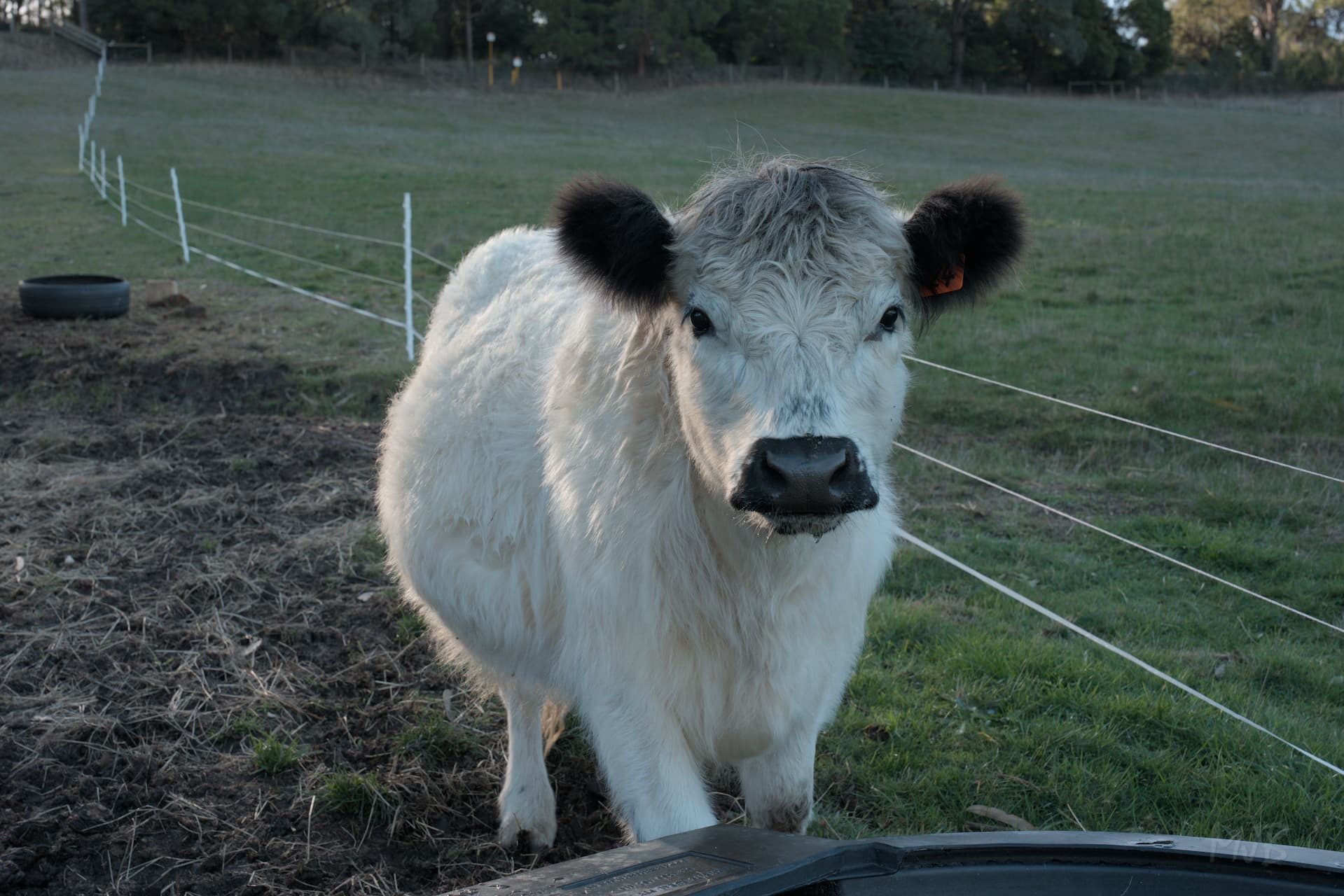
Eventually it became hard to ignore. I'm not sure what alternative diagnosis includes symptoms consistent with a kicking calf, but my imagination takes me pretty close to the Alien movies.
We reached out to the farm we purchased Oreo and Toffee from and, although they did seem surprised, confirmed that they had not been kept separate from their dad, and that it was indeed possible she was pregnant. This wasn't the news we were hoping to hear, as this only further increased the risks of complication with the calf. At least the sire was small in stature, so the calf would have a good chance of being a small one, and hopefully easier to calf.
By July, Oreo's udder was becoming more pronounced, and we witnessed Toffee regressing to her calfhood in a bold attempt at a milk heist. We weren't sure how close Oreo was to calving, but we couldn't risk losing colostrum to her sister, so we made the difficult decision to separate them.
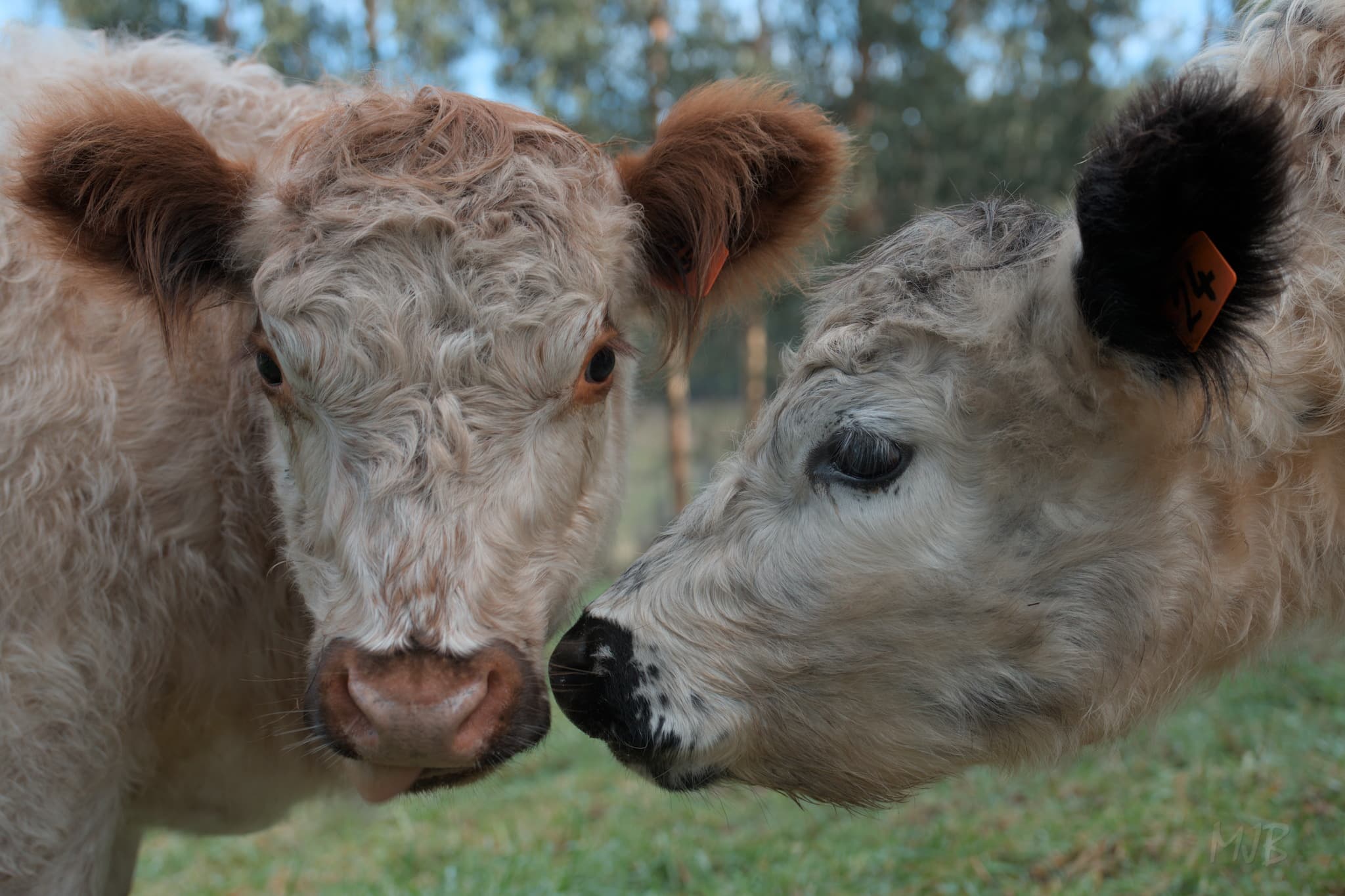
Seeing as there isn't much in the way of flat land on the property, we decided it was safest to put up a yard in our shed. This certainly wasn't the most practical arrangement, but we figured it would only need to be there for a couple of weeks until the calving. Cough cough.
After the second week of 3am alarms and stumbling out in the middle of the night to check on Oreo, we came up with the clever idea to get a security camera installed. This allowed us to check on her without getting out of bed, a system that remained in place for another three weeks.
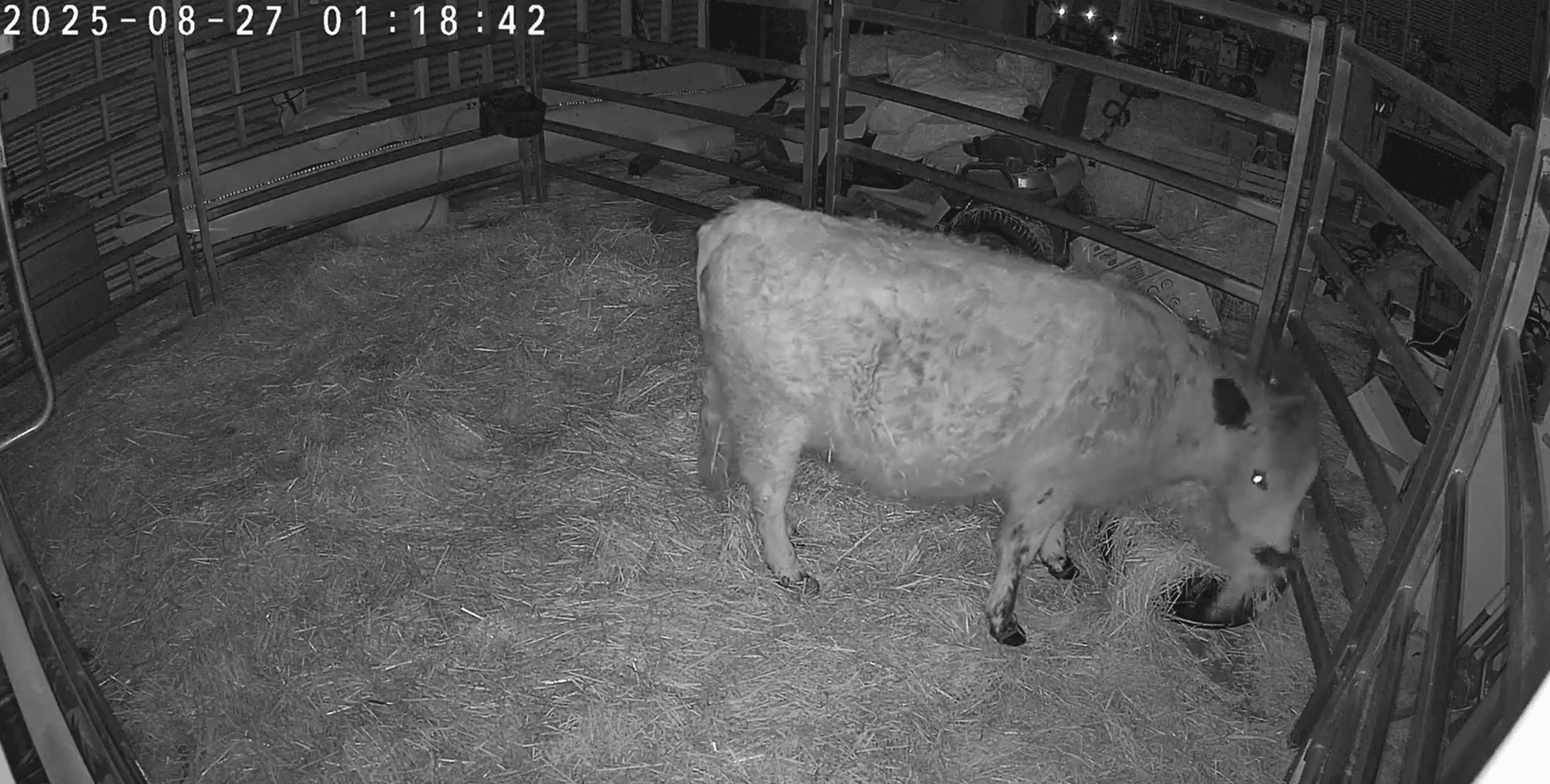
At 8am on Thursday 4th September, as I was getting up to get ready for work, Anita noticed Oreo was behaving restlessly, which is an indicator that she is close to calving. Just after 9am, I had joined my first work meeting for the day, when Anita knocked on my window to let me know it was starting. I quickly excused myself from work and rushed out to the temporary yard we had installed in our shed. By the time I got there, the legs were clearly visible, and thankfully, they were the correct ones.
After twenty minutes, there wasn't any clear signs of progression and the yellow colouring of the fluids was an indicator of foetal distress. We had prepared ourselves for complications in calving, so we didn't risk waiting any longer to intervene. Thankfully, Anita did an amazing job with the calving ropes, and before long, we had pulled an extremely yellow calf from our extremely small Galloway.
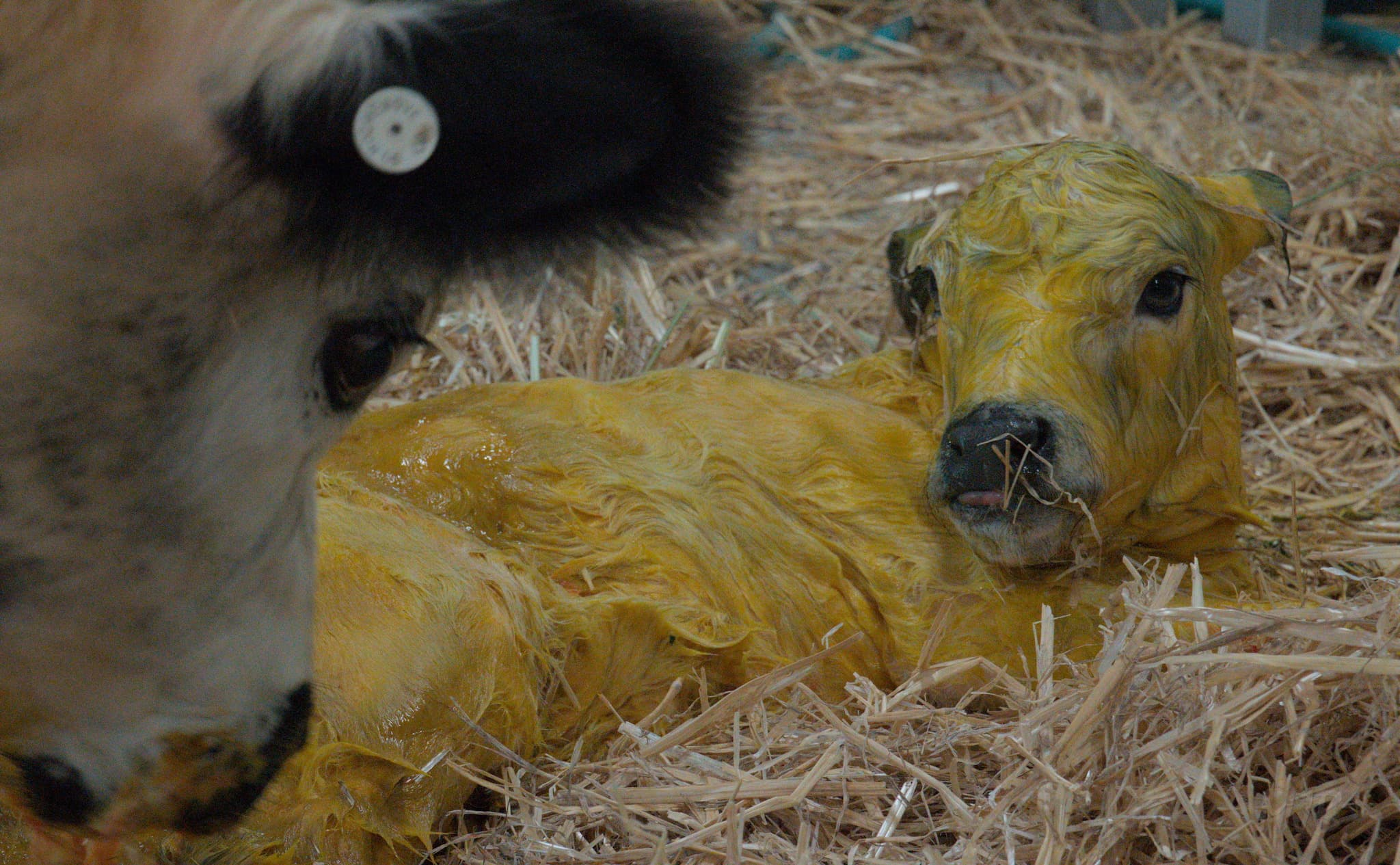
The first moments after birth are really important. We needed to make sure the calf was okay and well enough to feed, but we also needed to allow Oreo the opportunity to bond with her baby. Although she was very determined to clean up the afterbirth (something pretty gross to witness, but apparently quite important in the wild to avoid attracting predators), she dutifully began working on cleaning the calf, critical in the early stages of bonding.
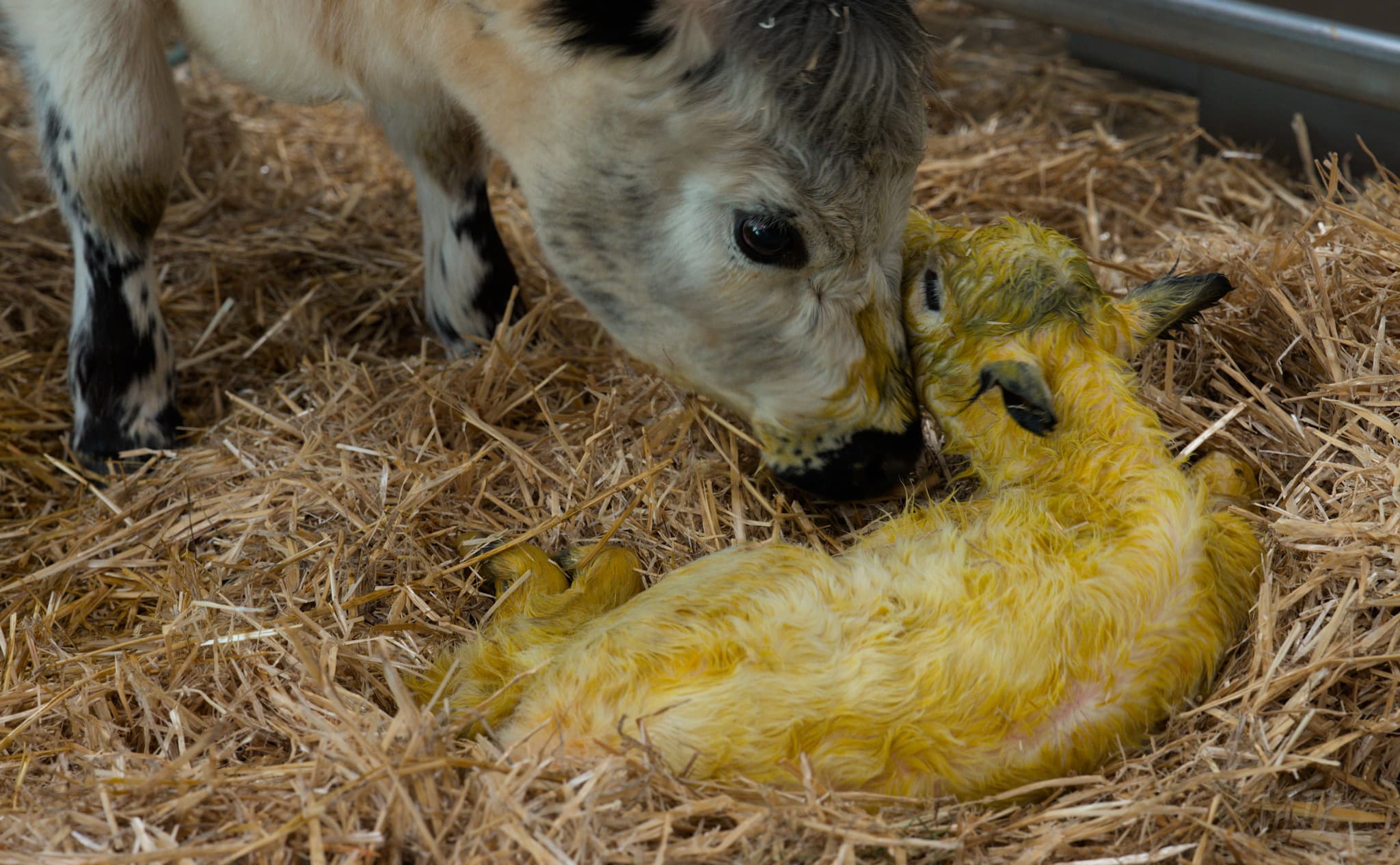
We had been so worried about complications during birth, and it seemed we might have gotten lucky. Before long, though, we realised we might not yet have seen the full consequences from the foetal distress.